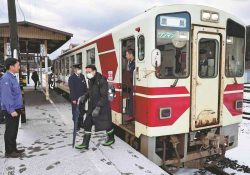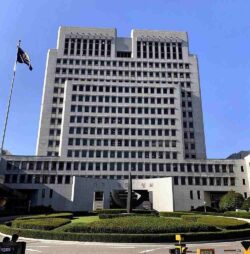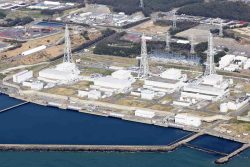16:30 JST, July 4, 2021
An enormous mudslide caused by heavy rains has swept away a number of houses in Atami, Shizuoka Prefecture. Residents were caught in the mudslide, and there are many people whose safety cannot be confirmed.
The central and local governments must do everything they can to conduct search operations and ascertain the full extent of the damage.
“I want you to do your utmost to take emergency measures while placing people’s lives first,” Prime Minister Yoshihide Suga said at an emergency meeting of the relevant ministers. The Shizuoka prefectural government has asked the Self-Defense Forces to mobilize personnel. The mudslide appears to have reached the sea. Residents who were swept away need to be found as soon as possible.
There are fears that another mudslide may occur again at the site, and many residents have taken refuge in evacuation centers and elsewhere. Efforts also need to be made to support evacuees.
Atami is known as one of the most popular tourist destinations in Japan. Many houses have been built on mountain slopes, and Shizuoka Prefecture has designated such locations as landslide disaster alert areas. They are also shown on hazard maps. Landslide disasters caused by heavy rain are said to have occurred near the site in the past.
At the time of the mudslide, the Atami municipal government had issued only a Level 3 alert, which calls for the evacuation of the elderly and other people in difficulty, not the highest Level 5 alert that calls for urgently securing one’s safety or a Level 4 alert that instructs people to evacuate.
Landslide disasters are difficult to predict because they occur suddenly. However, considering the amount of rainfall and the unique topography of the area, was the city’s evacuation information appropriate? It is important to carefully examine the situation.
In addition to Atami, many areas on the Pacific side of the Kanto and Tokai regions experienced record-breaking heavy rainfall due to the seasonal rain front. Some areas in Shizuoka Prefecture saw their largest amount of rainfall in 24 hours in recorded history.
According to the Japan Meteorological Agency, rainy conditions are expected to continue. Further vigilance is needed in many areas regarding disasters caused by heavy rainfall.
Sunday marked one year since the torrential rain disaster in Kyushu, which left 81 people dead or missing due to the flooding of the Kuma River in Kumamoto Prefecture. The torrential rains disaster in western Japan, which claimed the lives of about 300 people and became the worst flood disaster of the Heisei era, occurred three years ago also during this season.
Both torrential rain disasters in Kyushu and western Japan were caused by so-called linear precipitation bands, which cause heavy rainfall in the same place for a long period of time, resulting in widespread damage. In recent years, due to the effects of global warming, heavy rainfall disasters caused by linear precipitation bands have been occurring almost every year.
The agency has started to issue information about the occurrence of linear precipitation bands, to encourage residents to take early precautions.
To save lives, it is important for each and every member of the public to pay attention to such weather information as well as evacuation advisories issued by local governments. We should seek to take advantage of the lessons learned from past disasters and try to evacuate early.
— The original Japanese article appeared in The Yomiuri Shimbun on July 4, 2021.
"Editorial & Columns" POPULAR ARTICLE
-

Violations of Subcontract Law: Major Automakers Must Eliminate Old Practices
-

Local Governments’ Tax Revenues: Devise Ways to Correct Imbalances in Tax Sources
-

Heavy Rains in Asia: Support for Victims, Flood-Control Measures Urgently Needed
-

5 Japanese Business Dinner Mistakes to Avoid — and What They Taught Me About Business in Japan
-

New Nuclear Threat: China Seeking to Follow U.S., Russia in Military Expansion
JN ACCESS RANKING
-

Keidanren Chairman Yoshinobu Tsutsui Visits Kashiwazaki-Kariwa Nuclear Power Plant; Inspects New Emergency Safety System
-

Japan to Charge Foreigners More for Residence Permits, Looking to Align with Western Countries
-

Imports of Rare Earths from China Facing Delays, May Be Caused by Deterioration of Japan-China Relations
-

Japan Exports Rise in October as Slump in U.S. Sales Eases
-

Govt Aims to Expand NISA Program Lineup, Abolish Age Restriction





















